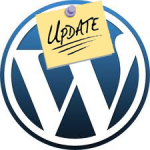 Depending on the context, the word “update” has many meanings in different spaces. For some, it represents a newer and improved version, while for others it means progress and things are moving forward in the right direction. When it comes to WordPress, they will issue updates about 8-10 times a year, leaving many wondering if it’s worth it to hit that ‘Please update now’ button for the latest release.
Depending on the context, the word “update” has many meanings in different spaces. For some, it represents a newer and improved version, while for others it means progress and things are moving forward in the right direction. When it comes to WordPress, they will issue updates about 8-10 times a year, leaving many wondering if it’s worth it to hit that ‘Please update now’ button for the latest release.
Shortly after updating a client’s site to WordPress 3.6, I had an issue with the latest version of NextGen Art Gallery, a popular plugin for image galleries and slideshows. It basically reduced the site to a single page with numerous errors – a total mess. While I was able to restore the site from a backup, it was clear I was not alone. As noted on this WordPress forum, many other WordPress users were struggling with this latest release of NextGen and Wordpdress 3.6 – all looking for answers and just venting their frustration.
So, I have outlined some key steps and areas to keep in mind, before hitting the update button:
1) Backup: I have stressed this enough, but it’s key that you have a redundant backup system in place. I would recommend a copy of all files on your system (you can drag and drop using your FTP program) as well as a database backup. Here are some options for backup applications. Bottom line: do not update unless you have a working backup in place. Also, most hosting providers have backup applications with a hosting package, so it’s worth exploring. You can restore by date and designated folders.
2) Review compatibility issues: Documentation on WordPress has always been top notch, and I would recommend reviewing the release notes on all plugin pages as well as review the forums for any compatibility issues. Pay special attention to frequency of plugin updates and developer notes. Users have the best and strongest voice on forums, so if many people are complaining about the same bugs, it’s probably true. In the case of NextGen, you did not have to look much further than this thread to know there were compatibility issues at hand.
3) Wait it out: Jumping into the latest version of WordPress without doing your homework is like plunging into a lake of cloudy water blindfolded. You don’t know what’s lies underneath until you break into the water. It could be fine or filled with a pool of snapping turtles. 🙂
So, don’t rush to update and pay close attention to activity around the updates, especially on forums and developer sites. I like to wait until a release has been out for a while before exploring that option to update.
4) Know your Plugins / Play in the Sandbox: Let’s face it – plugins are great as they give the user a little more control over their space and how their site functions. In essence, plugins are like virtual toys for an adult sandbox. However, plugins are usually the source of many compatibility issues, so it’s key that you know what plugins are used and you should only use the ones that are well supported. Community-based plugins are often well documented and supported by a group of developers. Along the lines of item # 2 above, make sure that you have a good understanding of how the plugin works and pay special attention to compatibility issues, especially with other plugins and versions of WordPress. Also, the 5 star user rating is a helpful way to identify the problematic plugins at first glance. However, you should also look at the user feedback behind the negative reviews. In addition, always have a staging or sandbox build to test compatibility of the latest version of WordPress and any plugins. Once you know everything is working properly, you can then push it live.
5) Automatic or Manual Update: A common question as users have the option to manually update their version of WordPress or it can be done automatically. I think this WordPress guide sums it up quite well. Basically, if you have made changes to a standard WordPress theme (Twenty Twelve, etc.), you should not use the automatic upgrade, as it will overwrite your changes – you should use a manual update instead. However, if you have a custom theme, check with your developer or software group BEFORE updating it. In some instances, they might have compatibility issues with the theme and the latest version of WordPress. Above all, you should know your theme inside and out.
That’s it – hope you’re more prepared for the next update! Feel free to share your thoughts on updating WordPress or contact me with any questions.

Recent Comments